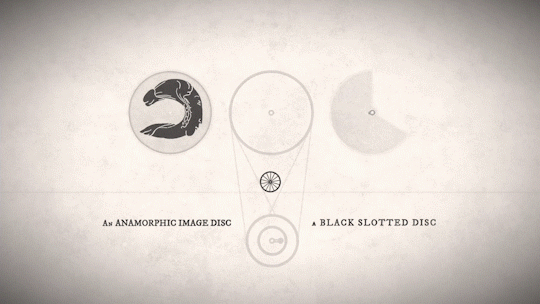![]()
fækts
Title:
Optikammer
Developer:
Optikammer
Location:
EU
Contact:
saluto@optikammer.com
Website:
http://www.optikammer.com
Indiedb:
http://www.indiedb.com/games/optikammer
Steam Greenlight:
https://goo.gl/TPHKu6
Twitter:
http://www.twitter.com/optikammer
Facebook:
http://www.facebook.com/optikammer
You Tube:
https://goo.gl/LGzH20
Status:
Ready for Exhibition
Genre:
Experimental / Indie / Playable Poster / Platformer
Players:
Single-player
Engine/ Language:
Construct 2, Scirra/ HTML5
Age Rating:
16/18 (TBC!)
Warnings:
Strobe effects, nudity, possible sexual themes and content, bohemianism
Tags:
Single-player, Experimental, Indie, Playable Poster, Platformer, Photography, Pre-cinema, Animation, Video-Games, GIF’s, Historical
Introduction
Optikammer – an orifice of antique optical innovations!
Optikammer is a playable poster concerning the strange forerunners of Cinema, Animation, Video Games & Cat GIFs…
Description
Optikammer tells a story about how disparate research & weird toys from the nineteenth century came to be regarded as the antecedents of modern Visual Media.
The story is presented for the general public’s amusement and edification by making original materials interestingly interactive.
Contemporary forms can be recognised in there earliest incarnations: Cartoons and Rotoscoped Images; VR Photography like Google Streetview; Motion Capture and “Matrix Bullet-Time”; Stop-Motion Animation to GIFs.
- Play with ground-breaking experiments and philosophical toys
- Interact with the chronophotography of Muybridge and Marey
- See where the ideas for cinema, animation, and digital media sprang from
Philosophical Toy
Optikammer’s story begins in the early 1800s when “Philosophical Toys” were a bridge between emerging sciences and popular culture. Often derived from experiments, they were commercialised as novel and enlightening amusements for adults and children.
Optikammer is a kind of philosophical toy that echoes the spirit of its own subjects. It aims to disseminate ideas to a wider audience by re-forging known technologies as storytelling tools.
Playable Poster
Optikammer works like a side-scrolling platform game, an interactive trope well established since Super Mario.
Optikammer looks something like a collection of nineteenth century playbills – a typographic environment that acts as a visual scaffolding for the core content – working optical artefacts.
Interactive Infographic
Infographics tell stories with data. Deeper meaning, and joy, can be gleaned through interaction and dynamism.
Optikammer is a progression of the idea of an infographic. It integrates dynamic data readouts and player interaction with compelling content to tell its stories more effectively than would ever be possible in a video or printed poster.
Background
Optikammer was born from a will to tell stories by playing with original artefacts. Working digital objects tell their own tales in a dynamically different way to linear media. To be really enjoyed and understood they should be played (with).
Optikammer’s narrative begins in the early 1800s when “Philosophical Toys” were a bridge between emerging sciences and popular culture. Mark “Thesaurus” Roget and the bold Michael Faraday were key players in describing optical phenomena, yet were involved somewhat accidentally outside their usual areas of expertise. The subsequent toys’ continued phantasmagorical depictions established by magic lantern slides in the century before, but also incorporated humorous and sometimes subversive subjects of the day. As devices developed and diverged, the emergent media called for new techniques to create hand-drawn images in motion. This intersection of art, science and culture is evident in each toy – from Thaumatrope to Anorthoscope, Phenakistoscope to Zoetrope.
In the latter half of the nineteenth century scientists and showmen continued their pursuit of motion through photography. In the work of bohemian Nadar and optical scientist Purkyně, early forms of the techniques behind The Matrix’s bullet-time and Google Street View are evident. Muybridge perfected the “arresting of motion” on the behest of a railroad tycoon cum racehorse owner, but struggled to play them back successfully as moving pictures. Nonetheless, his photographs are seminal in the history of stop-motion animation and film (also influencing established art forms as evident in paintings by Marcel Duchamp and Francis Bacon). Étienne-Jules Marey began his professional studies designing blood pressure monitors, later finding himself involved in chronophotography by developing a high-speed camera gun to analyse bird flight. Though his initial intentions were to study animal and human physiology, his innovations led toward much of what we now call cinema and motion capture, as well as medical imaging and aerodynamics.
These original materials exhibit humorous and fascinatingly surreal nineteenth century notions of cinematicity and phantasmagoria still extant in today’s visual media. Optikammer attempts to echo the spirit of its subjects – disseminating ideas to a wider audience by re-forging technologies as storytelling tools.
Gameplay & Interactivity
Optikammer is a side-scrolling platformer with over a hundred distinct gameplay elements.
It is a kind of playable poster or interactive infographic. Rather than being a gimmick, interactivity is key to discovering the exquisite ingenuity of these incredible items that led to today’s cinema, animation, motion capture, video games and much more…
- A platform style game format that works like a playable poster
- 8 levels, each covering a distinct phase of optical innovation
- Over two dozen interactive parts with more than fourscore playable artefacts
- Mechanics range from physics simulations to multi-state triggers to fully controllable photo-realistic avatars
- Available in a web browser, or download as an app
saluto@optikammer.com
‹ homepage
























